






| Large Yellow Underwing (Noctua pronuba (Linnaeus, 1758)) |







|
|
Scientific name: Noctua pronuba (Linnaeus, 1758) Common name: Large Yellow Underwing French name: Hibou, Fiancée (this last French common name is also used for another species: Catocala sponsa). Order: Lepidoptera Suborder: Heterocera Family: Noctuidae Subfamily: Noctuinae Wingspan: 45-55 mm Biotope: Woodland areas and open areas. Geographic area: Europe, North Africa, Central Asia east to India. Introduced to North America. Flight time: April to November. Number of generations : 1 Caterpillar: Green or brownish grey with a thin pale dorsal line and two rows of subdorsal black dashes on the hind part of the body. Host plant: Many herbaceous and ligneous plants including Primroses (Primula sp.), Violets (Viola sp.), Dandelions (Taraxacum sp.), Common Nettle (Urtica dioica) and Goat Willow (Salix caprea). |
The ground colour of the large Yellow Underwing's fore wings vary from pale brown to almost black. The forewings are slender and slightly curved or scythe-shaped. The reniform and orbicular patches are often strongly marked. There is a black mark on the outer margin near the apex. The hind wings are a bright orange yellow colour with a black submarginal stripe. The contrast between the bright colours, visible in flight, and the dull colours, at rest, is a mean to frighten potential predators. The Large Yellow Underwing is attracted to light. This is a migratory moth and sometimes large numbers are observed. The Large Yellow Underwing overwinters as a larva which goes on feeding on mild days. It pupates in an underground cavity. |
| [To know more about the Large Yellow Underwing] [Next picture] [Top] |
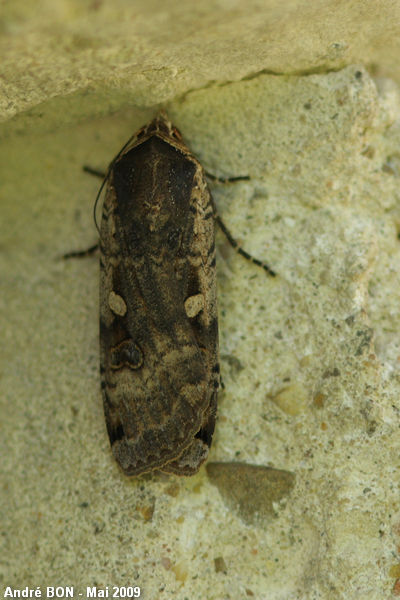
|
Here is one typical position of the Large Yellow Underwing landed with one forewing over the other. You cannot see the hind wings' bright yellow colour. |
| [To know more about the Large Yellow Underwing] [Next picture] [Previous picture] [Top] |
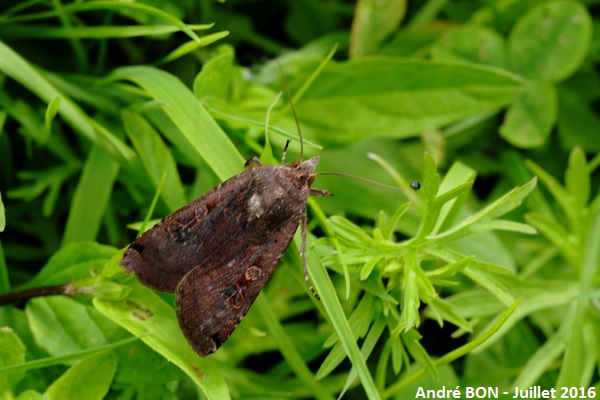
|
This time I observed the Large Yellow Underwing landed on low growing vegetation. |
| [To know more about the Large Yellow Underwing] [Next picture] [Previous picture] [Top] |
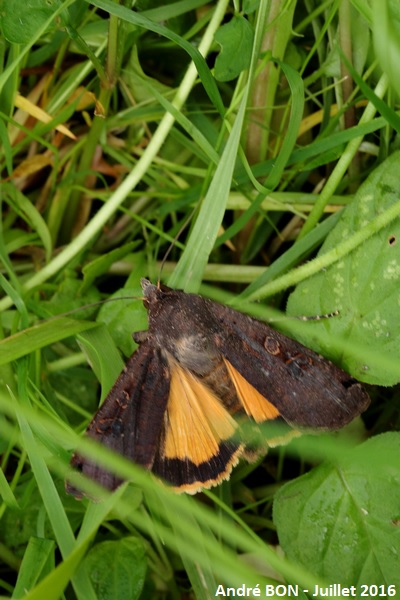
|
Worried by the photographer who approached a little too close, the Large Yellow Underwing went to land a little further, allowing me to have a small view of its yellow hind wings with a black submarginal band. |
| [To know more about the Large Yellow Underwing] [Next picture] [Previous picture] [Top] |
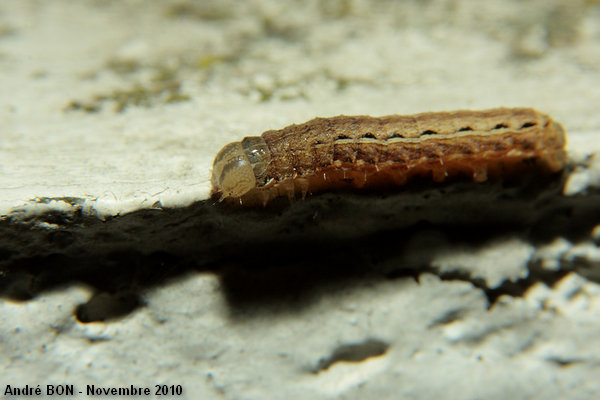
|
I have found this caterpillar under the litter of dead leaves. I have also thought to the Square-spot Rustic species (Xestia xanthographa), but I have discarded this species because I have read that it shows a well marked pale dorsal line. Such a line is not visible here. |
| [To know more about the Large Yellow Underwing] [Next picture] [Previous picture] [Top] |
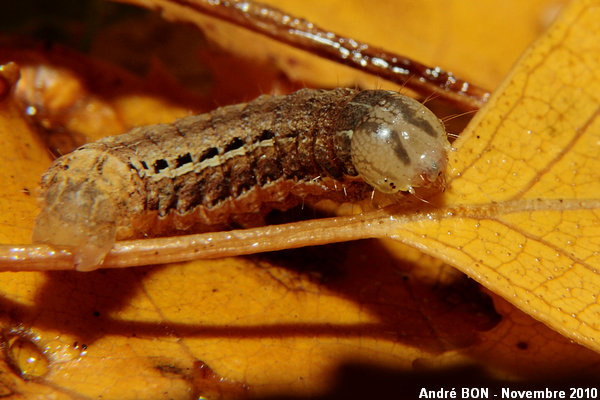
|
This rather small caterpillar is certainly not at its last development stage. I am far to be 100% sure of the species identification. |
| [To know more about the Large Yellow Underwing] [Next picture] [Previous picture] [Top] |
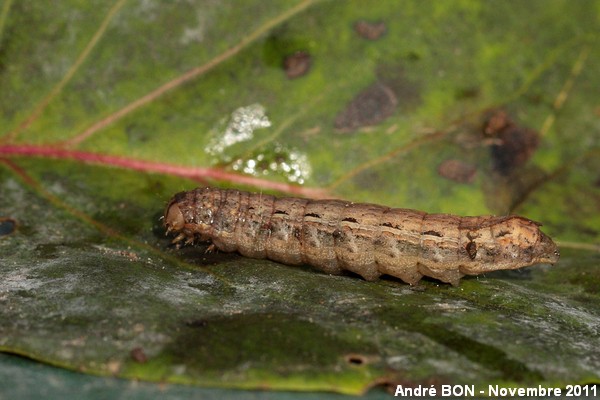
|
Here is one caterpillar at its last development stage or close to it. |
| [To know more about the Large Yellow Underwing] [Previous picture] [Top] |
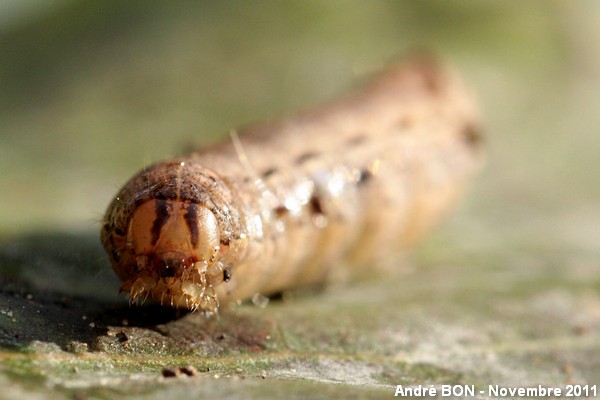
|
Front view. |